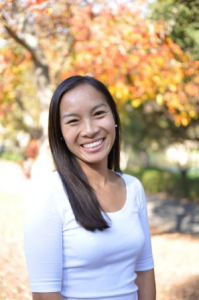In 2014 – 2015 Dr. Kim Blisniuk made in the news with San Jose State University Research Foundation Annual Report 2014 -2015 published in the article On the Fault Line with Kim Blisniuk.
As a tectonic geo-morphologist and quaternary geochronologist, Kimberly Blisniuk is engaged in examining and dating the Earth’s landforms and alluvial deposits adjacent to the San Andreas Fault. In simpler English, that means she is gathering rocks, soil and sediment along California’s most prominent earthquake fault, then measuring that material’s age and movement over time.
“The goal is to go into the field and look at these land forms with trained eyes so we can document the progressive movement of the land along the fault,” she explains. “By returning to those same locations and collecting samples on a regular basis, we can also obtain the age of the land forms.”
Measurement of land progression and age is key to estimating earthquake recurrence.
“We are figuring out how fast a fault moves over the most recent geologic time period in earth’s history. Th e rate at which a fault moves plus knowledge of the most recent earthquake’s timing provides us with the recurrence interval of a fault.”
Data from the measurements that Dr. Blisniuk and her students obtain in the field goes into scientific models of earthquake recurrence and seismic hazards. Th e data is also used by the federal government and insurance assessors to figure out where homes are the most vulnerable or least vulnerable to earthquake damage in order to determine earthquake insurance rates.
Dr. Blisniuk’s own educational experiences with geology and field mapping led her to appreciate the value of field studies for students.
“Field work is essential to students. They need to learn the nitty-gritty of collecting and processing samples. One of my undergraduate students has taken samples he collected in the field to a geology lab at Stanford University where I have a working relationship with other researchers. He is getting firsthand experience with bringing what is collected in the field back to the lab for evaluation – exactly what he will be doing in a future career as a scientist.”
Department of Geology, College of Science
Sponsors: U.S. Geological Survey, Earthquake Hazards Program; Southern California Earthquake Center
